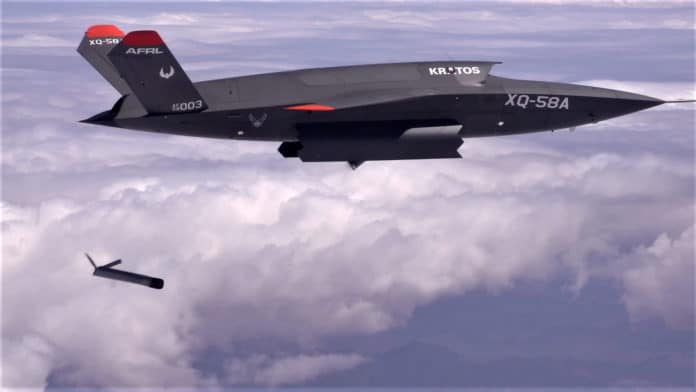The Air Force Research Laboratory (AFRL) successfully completed the Kratos XQ-58A Valkyrie combat drone’s sixth flight test and the first release from its internal weapons bay at Yuma Proving Ground, Arizona.
The Valkyrie is a high-speed UAV to support fighter jets, and this is the first time such tests have been conducted at operating speeds. Conducted in partnership with Kratos UAS and Area-I, this test demonstrated the ability to launch an ALTIUS-600 small, unmanned aircraft system (SUAS) from the internal weapons bay of the XQ-58A. Kratos, Area-I, and AFRL designed and manufactured the SUAS carriage, as well as the software necessary to enable its release.
The Valkyrie is an unmanned aircraft that is an essential part of the USAF Skyborg program. It is being developed as a runway-independent, high-subsonic pilotless aircraft to explore technologies for future combat drones that can act as escorts for F-22 or F-35 fighters and to be able to deploy weapons or surveillance systems.
The 28 ft (8.8 m) XQ-58 Valkyrie has a wingspan of 22 ft (6.7 m), a top speed of 567 knots (652 mph, 1,050 km/h), and a range of 2,128 nautical miles (2,449 miles, 3,941 km). Also, it has a service ceiling of 44,997 ft (13,715 m) and can carry eight weapons in its payload bay, including JDAMs and other small diameter bombs.
ALTIUS-600 can be launched for a variety of missions, including electronic warfare, signals intelligence, counter-UAS, intelligence, surveillance, and reconnaissance. Weighing less than 30 pounds, the ALTIUS 600 can itself carry various types of payloads weight between three and seven pounds. It has an endurance of about four hours and a range of 276 miles (440 km).
After the successful release of the SUAS, the XQ-58A completed additional test points to expand its demonstrated operating envelope. “This is the sixth flight of the Valkyrie, and the first time the payload bay doors have been opened in flight,” said Alyson Turri, demonstration program manager. “In addition to this first SUAS separation demonstration, the XQ-58A flew higher and faster than previous flights.”
This test further demonstrates the utility of affordable, high-performance UAVs for the air warfare of the future.
